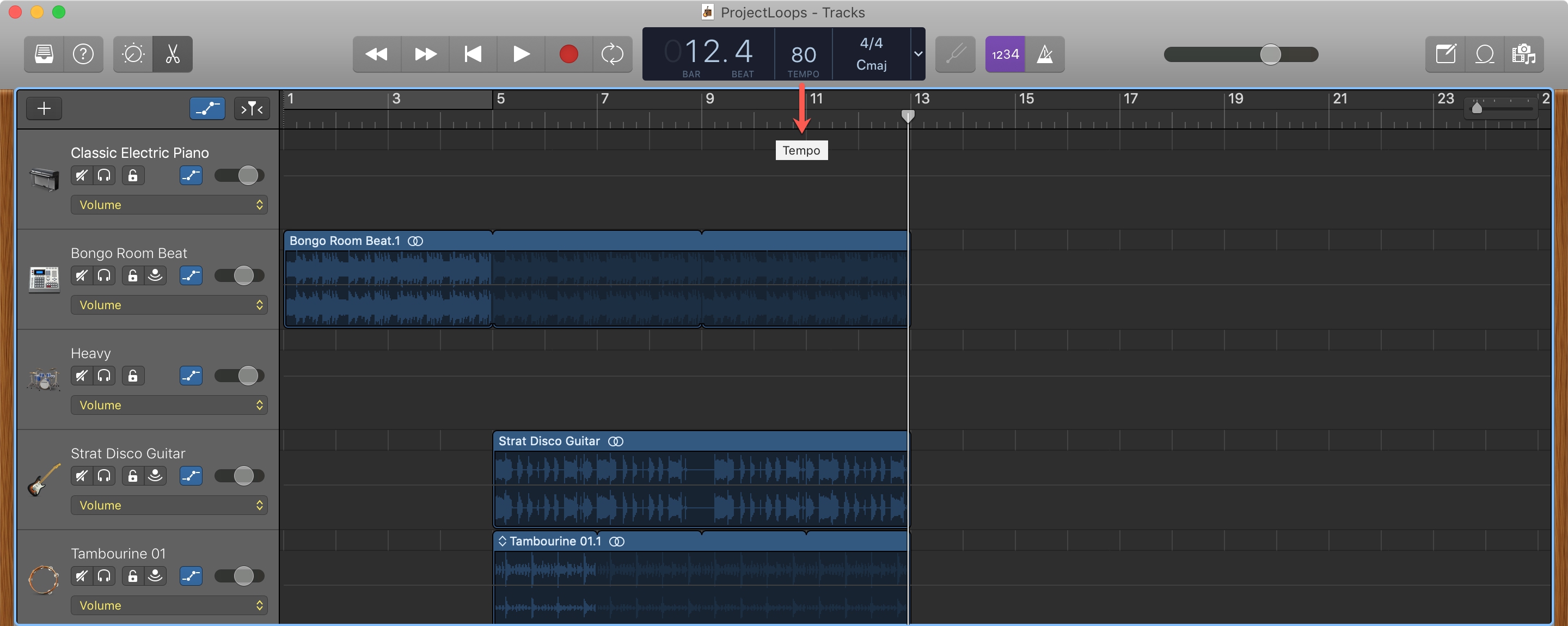- How to use the metronome in GarageBand iOS (iPhone/iPad)In the second GarageBand Quick Jam we’re looking at a fundamental component of recording in GarageBan.
- Switch playback window to “Project;” then click on the tempo to change it. Make sure the metronome is turned on. When “Metronome” is checked, the metronome will sound when recording only. Record a “starter” audio file of one or more students performing the rap in tempo with the metronome.
Home > Articles > Productivity
Change Metronome Tempo Garageband

The metronome has settings you can adjust for your needs. Open the Settings menu in GarageBand - aka “click the wrench icon” and select 'Metronome and Count-In'. The Count-In switch enables the metronome to play one bar of click before the recording starts. If you turn the Count-In off recording starts as soon as you click the record button.
␡- Use Tap Tempo and the Metronome to set the pace for your song

Like this article? We recommend
Like this article? We recommend
Use Tap Tempo and the Metronome to set the pace for your song
Okay, it’s later. Time to record your song! You’ve listened to your “idea” project’s rough recording(s) and have your music fresh in your mind. Whether you start your GarageBand song on your iOS device or Mac, it’s a good idea to set the tempo before laying down tracks. But many new songwriters aren’t sure what tempo to use. All they know is that the click-track seems too fast or too slow when they’re trying to record. No worries. GarageBand offers an easy solution.
Start by creating a new project for recording your song:
- GarageBand for iOS: Tap the Add Song button (+) in the upper-left corner of the My Songs browser. Select an instrument; then tap the Settings button (gear). On the Song Setting screen, select Tempo (see Figure 2).
GarageBand for Mac: In the New Song dialog, select the Songwriter template. The Tempo settings are in with the other song settings in the lower third of the New Project dialog (see Figure 3). Click the disclosure triangle if necessary to show the song settings.

Listen to your song in your head, and tap your foot to the tempo in your mind. If necessary, sing, hum or vocalize the music however you like, just to get a sense of the tempo. Now set the tempo:

- GarageBand for iOS: Tap your finger on the Tap to Set Tempo field in time with your song (see Figure 4).
GarageBand for Mac: Using your mouse or trackpad, move the cursor over the Tap Tempo button and tap your finger in time with your song—no need to click (see Figure 5).
The tempo field updates based on the tempo you tap. Continue tapping until you see an average range for your tempo. Type your average tempo into the Tempo field.
Once you’ve selected a tempo, test it with a click-track:
- GarageBand for iOS: Tap Done; then tap the Track view button.
- GarageBand for Mac: Click Create to open the new song.

Play the empty project and hum or sing along to the click-track (or click-track and Drummer in GarageBand for Mac.) If your tempo is good, you’re ready to record. If not, adjust the tempo:
Change Metronome Sound Garageband 2
- GarageBand for iOS: Go back to the Tempo settings and increase or decrease the tempo as needed.
GarageBand for Mac: Double-click the Tempo field in the LCD and type a new tempo, or drag the tempo numbers in the Tempo field up or down to raise or lower them (see Figure 6).
Figure 6
Change Metronome Sound Garageband Download
Now that the tempo is set, you’re ready to record!
Change Metronome Sound Garageband 1
If you’re comfortable singing and playing guitar or piano/keyboard at the same time, by all means record your initial tracks that way. Most likely you’ll rerecord the vocals later, but with this technique your guitar or keyboard performance will have the right feel. That’s why the first vocal recording is referred to as a scratch vocal or tracking vocal.